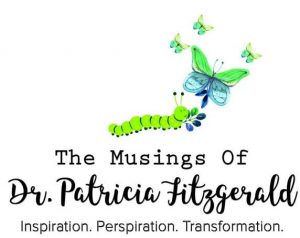Cognitive health issues in the old, middle-aged, and young is a rather disturbing trend I’ve noticed in practice over the last 5-10 years.
Yes, as we age it is considered “normal” to have “senior moments”, but what brings me pause is the number of 20, 30, 40 and 50 year olds coming to me for with concerns regarding memory and focus.
And make no mistake, no otherwise healthy person in their prime-years should be having chronic cognitive health issues (no matter how “normal” it’s become).
We’ve looked into this before in a previous article: “Is Your Smartphone Addiction Ruining Your Memory“, but I wanted to continue the conversation with a more action-oriented article.
Today’s post will focus on 10 no-brainer (-: ways to reboot your memory, sharpen your focus, and enhance (and protect) your overall cognitive performance.
Whether you believe your brain-hiccups may be from over-exposure to technology, old head injuries, mood disorders, lack of sleep or too much stress, there is a remedy here to help.
#10: Alpha GPC
A lesser-known cognitive health booster—but a powerful one is: Alpha Glycerol Phosphoryl Choline, also known as Alpha GPC.
While it sounds like a manufactured drug, Alpha GPC is a naturally-occurring choline-containing molecule found in a variety of foods such as red meat, pastured eggs, dairy products, organ meats, and cruciferous vegetables.
What makes it magical for brain health is it’s relationship to the neurotransmitter, acetylcholine—which is a product of the metabolism of Alpha GPC in the gut and brain.
Once Alpha GPC is metabolized into acetylcholine, it has been shown to have significant benefits to cognitive function including: memory formation, focus, learning ability, and memory recall.
Studies have even shown Alpha GPC effective in helping restore memory in stroke and TIA patients1.
#9: Acetyl-L-Carnitine
This simple amino acid, which also contributes to optimal production of acetylcholine, has been shown to do wonders for enhancing memory, learning capacity,2 and brain aging3.
One study even suggested it had beneficial effects on some clinical features of Alzheimer-type dementia, particularly those related to short-term memory4.
#8: Phosphatidylserine (PS)
PS is one of my favorite supplements and has significant research to back up its memory-enhancing, cognition-supportive, stress-reducing properties. It is a phospholipid, a fatty substance. The body produces it, and we get most of our intake from food. Food containing phosphatidylserine include organ meats and Atlantic mackerel, which are not common in the modern diet. Supplementation can be helpful, and research suggests it may be helpful with symptoms of Alzheimer’s disease.
#7: Bacopa
Bacopa is an Ayurvedic herbal remedy long-prized as a brain tonic and memory enhancer.
It’s been traditionally used for a variety of neurodegenerative diseases including anxiety, depression, and epilepsy in addition to memory, concentration, and focus.
An interesting side note: Bacopa was recorded in early Ayurvedic texts to have been used by scholars to help them memorize lengthy hymns5.
Modern studies have shown Bacopa to be effective in: reducing oxidative stress in the brain, enhancing cerebral blood flow6, enhancing learning, reducing anxiety, and improving memory consolidation78.
Because of its beneficial effects on both mind and spirit, I often recommend Bacopa for those who need a brain-boost and tend toward anxiety.
#6: Lion’s Mane
While its name may conjure up images of a medicine man gingerly collecting fur from a sleeping lion, Lion’s Mane AKA: “Bearded Tooth Fungus” is a powerful medicinal mushroom that’s been used in Traditional Chinese Medicine for centuries.
Thankfully, modern medicine is finally catching on the cognitive health prowess of this ferocious-sounding fungus.
For example, recent studies have shown Lion’s Mane effective in stimulating and supporting nerve-growth factor production in the brain9, which helps us process new information.
Human studies have also shown Lion’s Mane effective in improving short-term memory, photographic memory10 and cognitive function in those with mild cognitive impairments11; and animals studies have showcased its’ neuroregenerative capabilities12.
#5: Aerobic exercise
If brain health is the goal, then aerobic exercise can help.
While you don’t need to overdo it, regular aerobic exercise like brisk walking, cycling, or swimming, helps pump more blood and oxygen to your brain while reducing your glucose levels; all of which protect your brain from degeneration.
#4: Qigong
In addition to regular aerobic exercise, the ancient practice of Qigong has also shown significant benefits to healing, relaxing, and protecting the brain13.
Beyond brain health, there is an entire hospital in China known as “The Medicine-less Hospital” dedicated to using Qi Gong as its only remedy to heal patients with a wide variety of ailments…so this is serious stuff.
Much of Qigong’s brain-healing power can be accredited to stress-relieving benefits of regular practice, which forces you to be fully present and focused on the moment.
As a Qi Gong instructor, I’ve found that regular practice (even once or twice per week) can go a long way in resetting a scattered brain and calming an anxious heart.
#3: An honest self-assessment of your screen time/social media use
It’s been proven beyond a shadow of a doubt, that excessive screen time and over reliance on technology hurts your brain.
And while we certainly must live our lives, we must also strike a firm balance between practicality and addiction when it comes to Smartphones, tablets, social media, etc.
For more information, please see my previous articles: Is Smartphone Addiction Ruining Your Memory? and Texting: Reshaping our Brains, Necks, and Relationships.
#2: Spend time with loved ones and serving others
It may sound too good to be true, but spending more face-to-face time with your friends and family and helping others, is incredibly powerful for keeping your brain young.
This work on several different levels. For example, spending time helping others (and forgetting about yourself) helps keep life in perspective, which will reduce your stress levels and make you happier overall.
And studies have shown that people with more of a robust social support network have better memory and cognitive health than those without14.
Again, much of this has to do with the reduction in stress that healthy relationships offer us.
#1: Get enough sleep
This is my #1 tip…because it’s so, so important.
If you’re not sleeping enough, which means 7 1/2 – 9 hours (or more) a night then you will have impaired cognitive function; no matter what your age, lifestyle habits, or genetics.
One of the lesser-known reasons that deep, natural sleep is critical to brain function is that it activates a newly discovered system in your brain known as the glymphatic system.
Coined by Dr. Maiken Nedergaard based on its similar function to our lymphatic system—a primary detoxification system—the glymphatic system is responsible for cleansing our brains of harmful cellular by-products that, if left to accumulate, could lead to severe cognitive decline as we age.
In other words, it acts like your brain’s midnight cleaning crew and it is only activated during deep, natural sleep.
(I discuss the glymphatic system at length in a previous post: “Science Confirms: Sleep Detoxifies Your Brain“)
Plus, during sleep is when your brain engages in what’s known as synaptic pruning, where old information is pruned out to make room for new information.
If synpatic pruning cannot take place due to poor quality sleep, it will impair your ability to form new memories and retain new information (some of my patients humorously refer to this as “new-mommy or daddy-brain”).
Where to start?
No matter if your cognitive health issues are mild, moderate, or severe, your primary focus should be getting your sleep sorted out…because that will make the biggest difference.
Second, if your issues are mild to moderate and you’re under age 50, start by trying some of the other recommendations above, and talk to your practitioner about including the supplements recommended.
Finally, if your issues are moderate to severe, do not despair!
Instead, seek out the assistance of a qualified integrative health practitioner to help you identify the root cause of your issues and customize a healing plan.
I can tell you from experience that the brain—just like the body—is brilliantly designed to heal and regenerate when given the proper tools and nourishment to do so.
Blessings on your path to better memory, focus and cognitive well-being.
-Dr. Patricia










